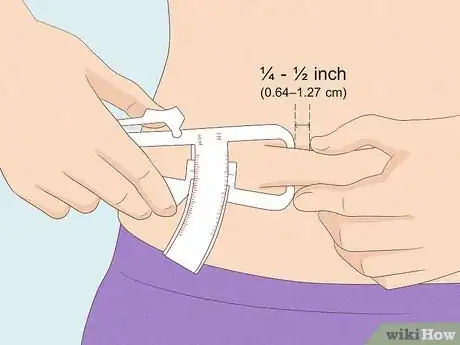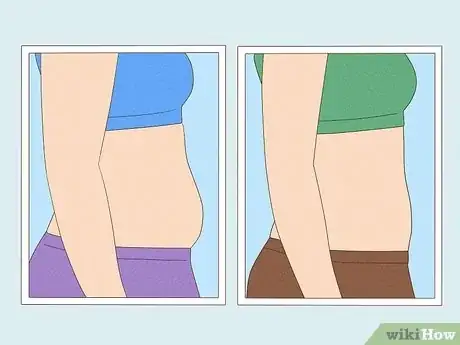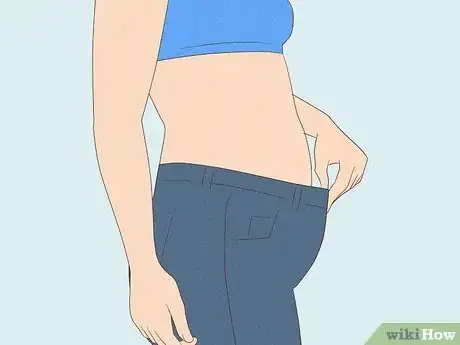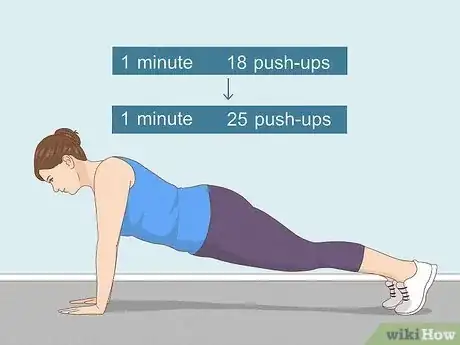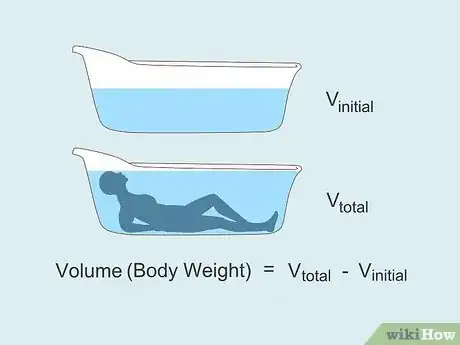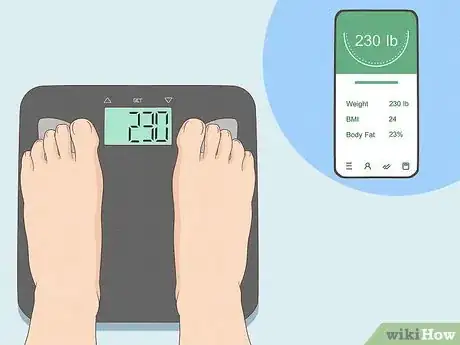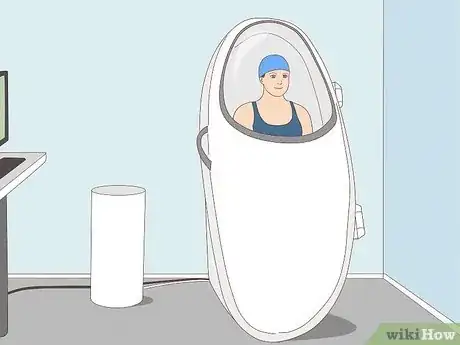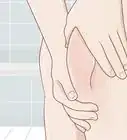This article was co-authored by Brendon Rearick and by wikiHow staff writer, Hunter Rising. Brendon Rearick is a Personal Trainer, Strength Coach, Fitness Program Director, and co-founder of Certified Functional Strength Coach (CSFC), a fitness education company in the San Francisco Bay Area. With 17 years of experience in the fitness industry, Brendon specializes in strength and conditioning, and his company CSFC has certified over 3,000 trainers in over 20 countries. Brendon has worked as a Program Director for Mike Boyle Strength and Conditioning (MBSC) and earned his massage therapy license from the Cortiva Institute-Boston. Brendon holds a BS in Kinesiology from the University of Massachusetts Amherst.
There are 13 references cited in this article, which can be found at the bottom of the page.
This article has been viewed 18,105 times.
If you're trying to lose weight, how can you track your progress if you don't have a scale at home? Even though a scale makes it easier to see your weight, it might be a little misleading as you build up muscle. Luckily, there are many other effective ways you can check your weight and body composition. Keep reading for at-home alternatives you can use instead of a scale and more accurate tests you can have done by your doctor.
Things You Should Know
- Track fat loss progress by measuring changes in your waistline and skinfolds. You can also take weekly or monthly pictures and compare them.
- Get a weight estimate by using at-home weights and a see-saw or by trying a water displacement test.
- You can use special equipment available through local hospitals and universities to get detailed body fat composition scans.
Steps
Measure your waistline.
-
You can track fat loss by the changes in your waist measurements. Stand straight up and wrap a flexible measuring tape around your waist just above your hip bones. Make sure the tape measure is parallel to the floor and snug against your skin. Right after you take a deep breath out, check where the measuring tape overlaps to take an accurate measurement.[1] X Trustworthy Source Centers for Disease Control and Prevention Main public health institute for the US, run by the Dept. of Health and Human Services Go to source
- Take your measurements every 2–4 weeks.[2] X Research source
- Other common parts of your body you can measure include your bicep, chest, hips, and thighs.[3] X Research source
- Taking your measurements is a better way to record your weight since your waistline gets smaller as you work out.
- Since muscle weighs more than fat, only recording your weight may make it seem like you’re not making progress as you get more fit.
Do a skinfold test with body calipers.
-
Skinfold tests can give you a rough estimate of your body fat percentage. A pair of body calipers looks like a C-shaped clamp used to measure the folds of your skin. Use calipers to measure the skin on the back of your triceps, the front of your biceps, the inner edge of your shoulder blade, and the skin right above your hip bone.[4] X Research source
- Pinch the skin between your finger and thumb and clip the calipers on to take your measurements.
- Position the jaws of the calipers about 1⁄4–1⁄2 inch (0.64–1.27 cm) from where you’re pinching the skin with your fingers.
- Try taking the measurements 2–3 times to ensure you get an accurate read.
- Body fat percentage depends on the sum of your measurements as well as your age and gender.
- You can find tables to calculate your body fat percentage here: https://www.quickmedical.com/downloads/lange-skinfold-caliper-manual.pdf.
Take before and after pictures.
-
A visual comparison makes it easy to see body changes over time. Take your photos shirtless or while you’re wearing tight athletic clothing since you’ll be able to see your progress better. Start with a picture where you’re looking directly into the camera, and take another picture of your side profile so you can compare a few different angles.[5] X Research source
- Wait 1 month before you take pictures again to see if you’ve lost weight.
- Wear the same clothes in each of your photos so the changes in your figure are more noticeable.
Try on your old clothes.
-
You’ll be able to track weight changes based on how well your clothes fit. Dig through your closet for an old shirt or pair of pants that you used to wear, and put them on to see how they fit. While you won’t get an accurate number for your weight, you can tell if you’ve lost or gained weight based on how loose or snug your clothes fit to your body.[6] X Research source
- Try clothes on every 1–2 weeks so you can keep better track of any weight changes.
Check in with how your body feels.
-
Increased energy levels and easier workouts are signs you lost weight. Rather than focusing on the numbers when you’re trying to lose weight, get in tune with your body and pay attention to how you feel doing your usual tasks. If you’re feeling more energetic than you used to or if workouts and daily tasks don’t make you as exhausted as before, then you’re getting more fit.[7] X Research source
- You’ll also feel like you’ve found a consistent groove and routine if you’re losing weight.
Perform a water displacement test.
-
You can track the changes in water level to estimate your weight loss. You may notice that the water level changes when you get in your bathtub, and that’s because your bodyweight displaces the water.[8] X Research source Fill a tub with water so you can submerge your entire body and mark the water level. After you hop in the tub, check how much the water level rose. You can get an estimate of your weight by calculating the change in volume.
- This method usually works best for weighing smaller objects.
- It’s tricky to measure your body weight with water displacement test since you need a tub deep enough to submerge your entire body without overflowing.
Add weights to a see-saw until it’s balanced.
-
A see-saw acts as a makeshift balance scale to measure your weight. Sit on one end of the see-saw and have a friend load weights or gallons of paint onto the other end. Once the see-saw is parallel to the ground, then the weight on the side is the same as your bodyweight. Check the amount of weight you needed to balance out the see-saw to know how much you weigh.
- See-saws are basically large balance scales that will stay level if the weight is even on each side.[9] X Research source
- This method might be a little impractical since you’ll have to take multiple weights to a park or playground to use a see-saw.
Use bioelectrical impedance analysis (BIA).
-
BIA uses electricity to measure muscle and fat density in your body. Bioelectrical impedance analysis is a non-invasive test that sends a small unnoticeable current through your body. The current travels faster through lean body mass than it does through fat, so the test gives you a rough estimate of your body composition within a few minutes.[10] X Trustworthy Source PubMed Central Journal archive from the U.S. National Institutes of Health Go to source
- BIA isn’t the most accurate since physical activity, hydration, and temperatures can affect the readings.
- Getting a BIA from a doctor or weight specialist is the most accurate, but you can buy a scale with BIA technology to use at home.
Take a Bod Pod test to measure body composition.
-
Bod Pods use air displacement to compare fat mass to lean mass. A Bod Pod is a large egg-shaped device that you sit in that measures the change of air pressure. The device takes a baseline reading when it’s empty and tracks your body mass when you get inside. Once you get a reading, a doctor or specialist can give you a detailed breakdown of your body composition.[11] X Research source
- Bod Pods are still relatively new so they aren’t widely accessible.
Get a full-body DXA scan.
-
DXA scans use x-rays to accurately read your body composition. During a DXA scan, you’ll lie on a table and have 2 X-rays pass through your body to get the most accurate image of body fat compared to lean muscle mass. That way, you’ll be able to see the exact makeup of your body composition so it’s easier to track.[12] X Trustworthy Source PubMed Central Journal archive from the U.S. National Institutes of Health Go to source
- You can get a DXA scan at a hospital or a university if they have the proper equipment.
- DXA scans take around 10–15 minutes to complete.
- You’ll get the most accurate results if you’re well-hydrated and haven’t eaten within 3 hours of the scan.[13] X Research source
You Might Also Like
 Is My Yogurt Bad?: 7 Signs
Is My Yogurt Bad?: 7 Signs



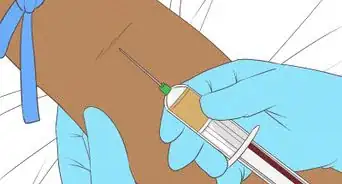


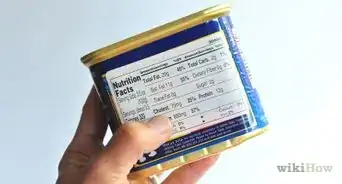


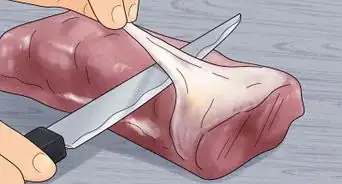


References
- ↑ https://www.cdc.gov/healthyweight/assessing/index.html
- ↑ https://youtu.be/3OrwgRdGnTs?t=156
- ↑ https://youtu.be/gs4P7SNOsfo?t=144
- ↑ https://www.quickmedical.com/downloads/lange-skinfold-caliper-manual.pdf
- ↑ https://youtu.be/PBbwUT_1SUQ?t=252
- ↑ https://youtu.be/gs4P7SNOsfo?t=378
- ↑ https://www.shape.com/weight-loss/management/10-ditch-scale-ways-tell-if-youre-losing-weight
- ↑ https://youtu.be/05WkCPORlj4?t=29
- ↑ https://youtu.be/UY-jDO58vSs?t=207
About This Article


